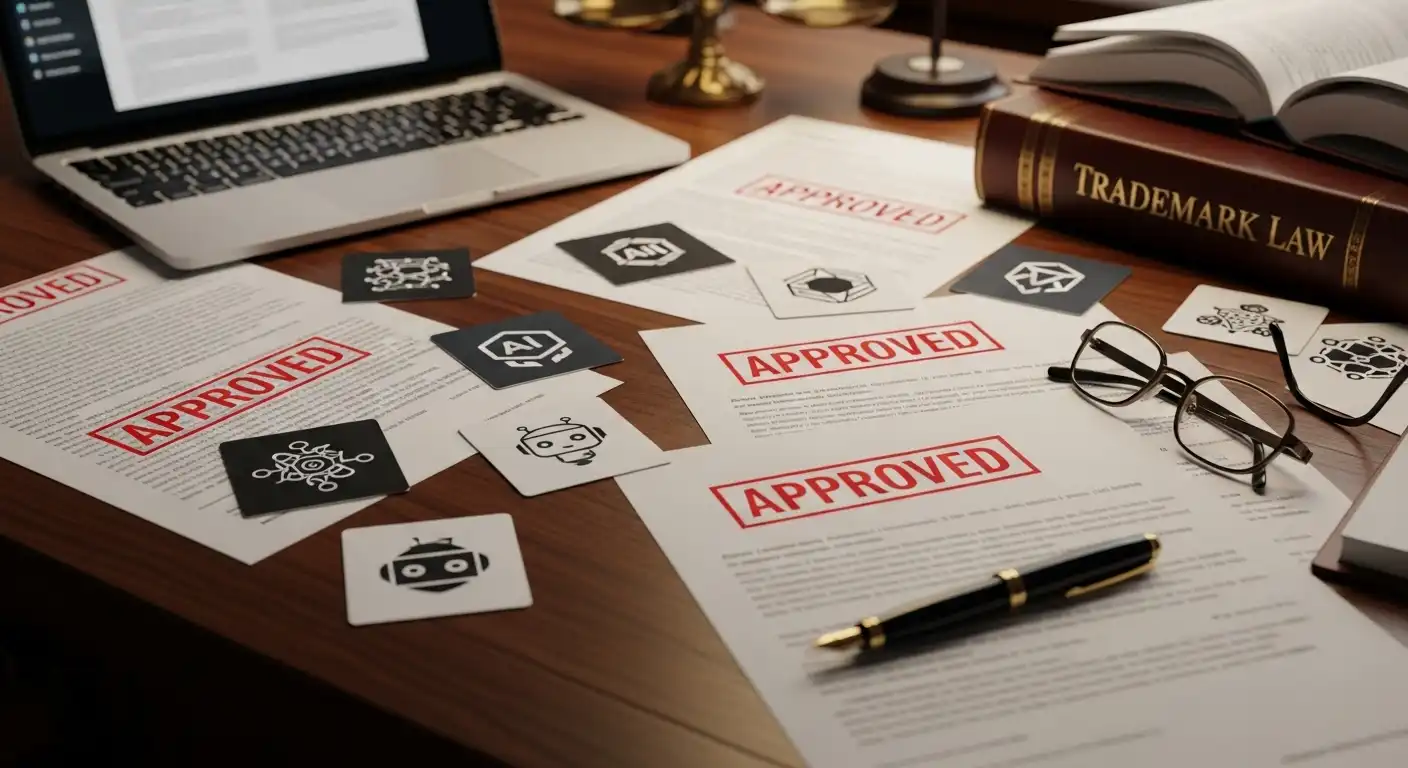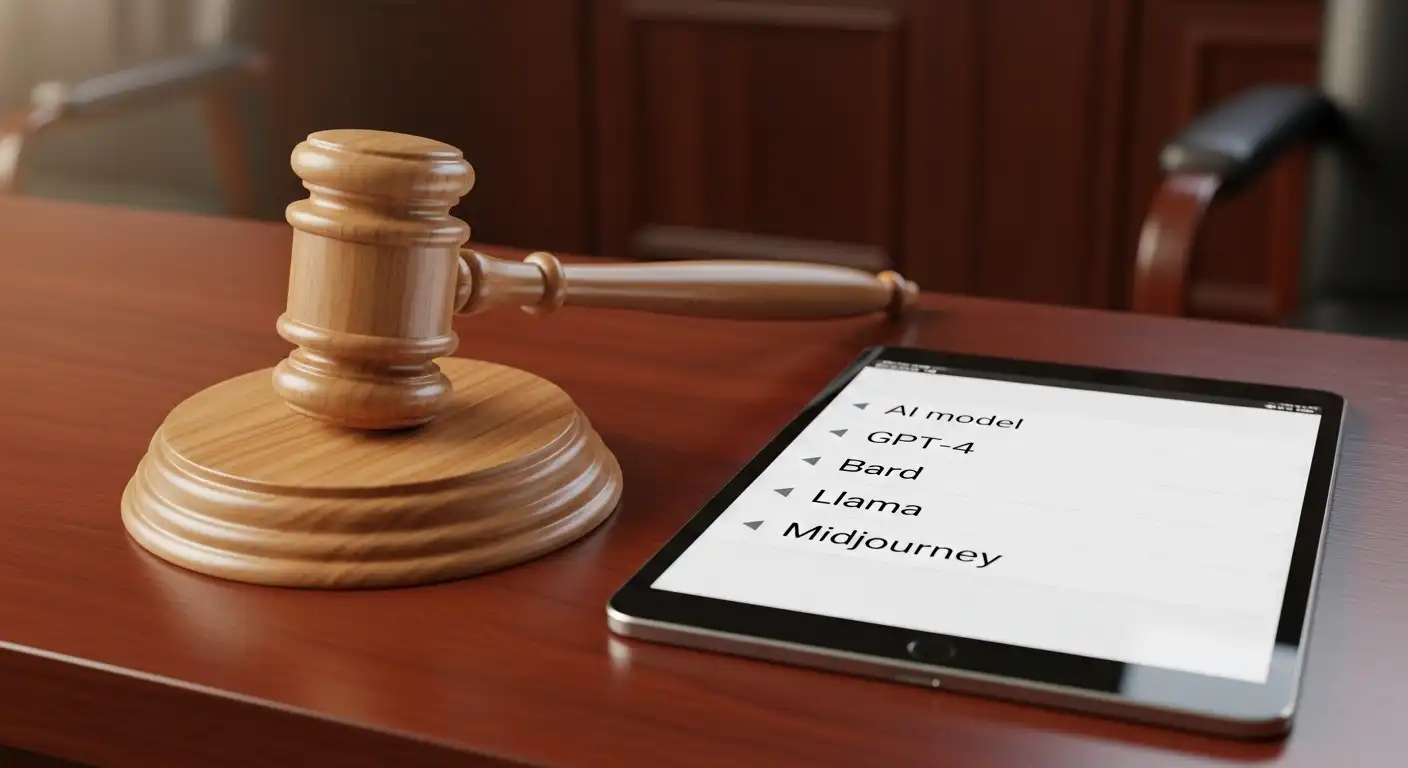Trademarking Prompt Libraries and Model Names: Are You Protectable?
Can you trademark a prompt library or an AI model name? The short answer is yes — but success depends on whether the name functions as a brand identifier and meets trademark law’s standards of distinctiveness. In today’s crowded AI market, choosing and protecting brand names has become just as important as the underlying technology.
Why this matters in 2025
Generative AI is no longer experimental. Every month, companies launch new foundation models, domain-specific prompt packs, and curated prompt libraries. As more products enter the market, names collide. Developers and in-house counsel increasingly face the question: “Can we protect this name as our trademark, or do we risk refusal, opposition, or rebrand?”

How trademarks work for AI products
At its core, a trademark protects the ability of a word, phrase, or design to signal the source of goods or services. It doesn’t protect the technology itself — your model weights, your prompts, or your architecture. It protects the brand that customers associate with those assets.
Examples
- Trademarked model names: “ChatGPT,” “Claude,” “Gemini.”
- Trademarked libraries/tools: “TensorFlow,” “PyTorch.”
- Generic/unprotectable terms: “Prompt Library,” “Text Encoder,” “AI Assistant.”
These examples show that distinctive coined names are protectable, while generic labels fail.
Distinctiveness spectrum: the make-or-break factor
Trademark law uses a five-part scale to judge registrability:
- Generic – never protectable (e.g., “Prompt Pack”).
- Descriptive – often refused unless you prove acquired distinctiveness (e.g., “Medical Prompt Library”).
- Suggestive – inherently protectable; requires imagination to connect (e.g., “SparkCue”).
- Arbitrary – common word used out of context (e.g., “Orchard” for an AI model).
- Fanciful – invented word (e.g., “ZYNTRA”). Strongest protection.
The higher you are on this spectrum, the easier your registration process and the stronger your rights in disputes.
Model names vs. prompt library names
Model names
Courts and trademark offices already accept that software names can function as trademarks. A model name like “PhoenixAI” can be protectable if used as a brand. Problems arise when names describe features (e.g., “Large Language Transformer 5000”).
Prompt library names
Less familiar territory, but the same rules apply. A curated set of prompts sold under a distinctive badge can act as a brand. For example, “NeuroCue Collection” could be trademarked, but “Financial Prompt Templates” would struggle.
Specimens: evidence of brand use
When you file, you need proof of how you use the name in commerce:
- Class 9 (software): screenshots of download pages, splash screens, or dashboards.
- Class 42 (SaaS/API): sign-up pages, docs with the brand header.
- Class 41 (training): course pages or certificates showing the brand.
The specimen should make clear the name is a brand, not just an internal feature label.
Global filing strategies
AI products launch globally, so plan ahead. Use the Madrid Protocol to extend protection across multiple countries. Watch out for translation or cultural pitfalls — a coined word in English may be descriptive elsewhere.
What if your mark is descriptive?
You have four main options:
- Pair it with a distinctive house mark (e.g., ACME Radiology Prompt Library).
- File it on the Supplemental Register in the U.S. until distinctiveness grows.
- Argue suggestiveness by highlighting consumer imagination.
- Invest in secondary meaning with marketing and user recognition.
Real-world examples and cautionary tales
Consider the disputes around software names like “Windows” (arbitrary and protectable) vs. “App Store” (descriptive, contested). Similar fights may emerge around AI product terms. A company branding its curated prompt pack “Legal Assistant Prompts” risks both refusal and market confusion.

Case study: ChatGPT vs. descriptive clones
When OpenAI launched ChatGPT, dozens of apps appeared in app stores using “GPT” generically. Enforcement depended on whether consumers saw “GPT” as a brand or as shorthand for “generative pretrained transformer.” Distinctive coined names avoid this gray zone.
Beyond trademarks: other IP layers
Remember: trademarks protect the name, not the content. Pair them with:
- Copyright for training guides, prompt writeups, or sample outputs.
- Contracts (terms of service, licenses) to control use and deter scraping.
- Trade secrets for proprietary prompt engineering techniques.
Filing checklist for AI model or library names
- Pick a distinctive coined name.
- Run clearance searches across jurisdictions.
- Choose the right classes (9, 42, 41, 35).
- Gather specimens showing commercial use.
- File wordmark first; add logo later.
- Plan for global expansion via Madrid.
- Set up monitoring to catch infringement early.
Enforcement in practice
Practical options include:
- Marketplace takedowns (Google Play, GitHub, npm) for clones.
- Friendly coexistence agreements with unrelated projects.
- Cease-and-desist letters with evidence of confusion.
- Litigation if high-stakes confusion persists.
Extended FAQs
Do I need to trademark every variant?
Usually no. Focus on the root brand. Add variants only if they become independently valuable.
Can I enforce against open-source projects?
Yes, if the use confuses customers. Context matters: hobbyist repos may be harmless, but hosted services with similar names may cause real risk.
What about internal codenames?
Internal-only names don’t function as trademarks until they reach customers.
Is trademarking worth it for small projects?
Yes, if you expect traction. Early filing avoids rebrand costs later.
Authoritative resource
For a clear overview of the U.S. trademark process, distinctiveness, and filing strategy, see the USPTO Trademark Basics.
Conclusion
Trademarking prompt libraries and model names is not only possible, it is increasingly essential. The trick is picking distinctive, protectable names, using them consistently as brands, and pairing them with the right specimens and filings. With competition rising and enforcement actions growing, treating your AI model names as strategic IP assets may save you from disputes and rebrands down the line.
